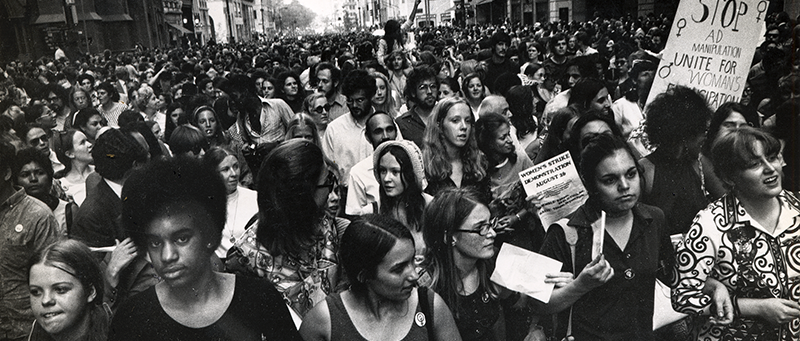
Psychology of Political Activism: Women Changing the World, based on Professor Lauren Duncan’s spring seminar, was Smith’s first endeavor into the world of MOOCs. When we began to consider how to design the course, one of the questions we discussed at length was:
“How do we design a user experience that reflects a sense of Smith’s unique and individualized learning environment in an online course with potentially thousands of students from all over the world?”
Although the user experience evolved over three iterations of course runs on edX, there were several approaches to the design we used to answer this question.
Connecting Physical & Virtual Learning
First, we decided it was important to give an immediate impression of human interaction to MOOC students as they entered the course. One way we did this was to highlight the work done by Smith students to develop the content.
Professor Duncan required students in her face to face course to choose one of a pre-determined group of featured activists to research and collect biographical information from the Sophia Smith Archives. These students were then credited in the “About the Course Team” section of the course.
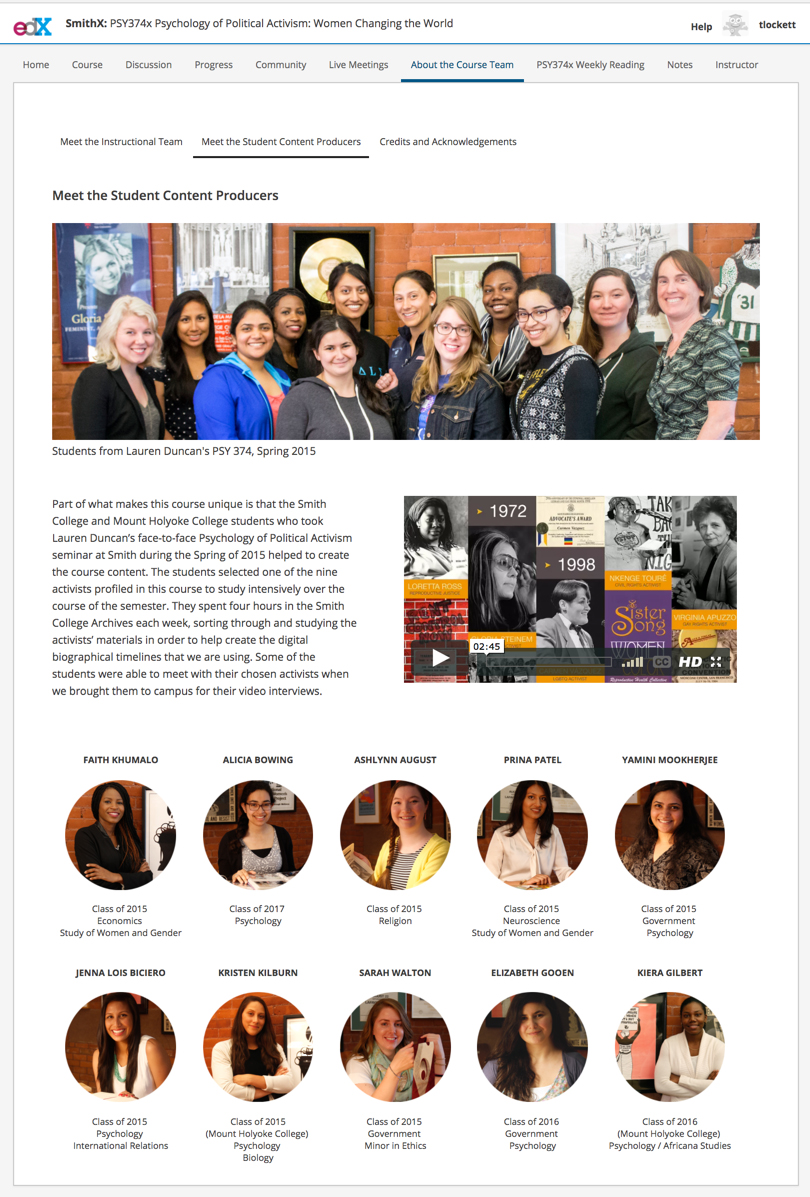
The section included student introductions, a description of the content curation process, and inspiring comments from students such as the one from then senior, Prina Patel who talked about what it was like working with objects from the life and history of someone she admires.
“The most important thing that I learned in this class was from that last page of Loretta Ross’ oral history which was talking about how our heroes can’t be perfect and that’s because they’re people. As someone who would like to pursue a career in reproductive justice, that’s something that I need to keep in mind. I don’t need to be perfect. My role models aren’t perfect. But, we all are engaging in this perfect cause.”
–Prina Patel, Class of 2015, Neuroscience
and Study of Women and Gender
Second, we wanted to present the various forms of media and images the students were gathering and create opportunities for MOOC students to actively engage with this content. We identified a free open source tool produced by Northwestern University’s Knight Lab called TimelineJS. Extremely reliable and easy to use, TimelineJS allowed students to gather images, video, and audio in a spreadsheet and convert it to a web-based timeline that could be embedded in the course, which resulted in an interactive piece on the life of each activist. Here is the timeline based on Prina Patel’s research on Reproductive Rights Activist, Loretta Ross (timeline).
In addition to using these timelines as a biographical resource, we embedded the timeline of the featured activist of the week in the quizzes following each of the lectures and asked students to read the question and then interact with the timeline to find the answer. While there is room for improvement on how these two pieces fit together due to platform limitation, MOOC students found it to be an engaging experience.

Reinforcing a Reflection of Smith
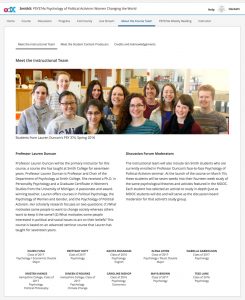
To demonstrate diversity and to provide students with a sense of belonging and support from our Smith community, we incorporated nine featured activists and twenty four Smith students in a variety of ways throughout the course. One of these methods was to assign each of the students enrolled in Professor Duncan’s face-to-face Fall 2016 seminar the task of moderating a weekly discussion board. As a result, these students heard global perspectives on what they were learning in class, and in turn, were very successful in reinforcing community through MOOC discussions. In the second and third iteration, we hired two of the TAs from the first run, Maya Brown and Kavita Bhandari, back to moderate.
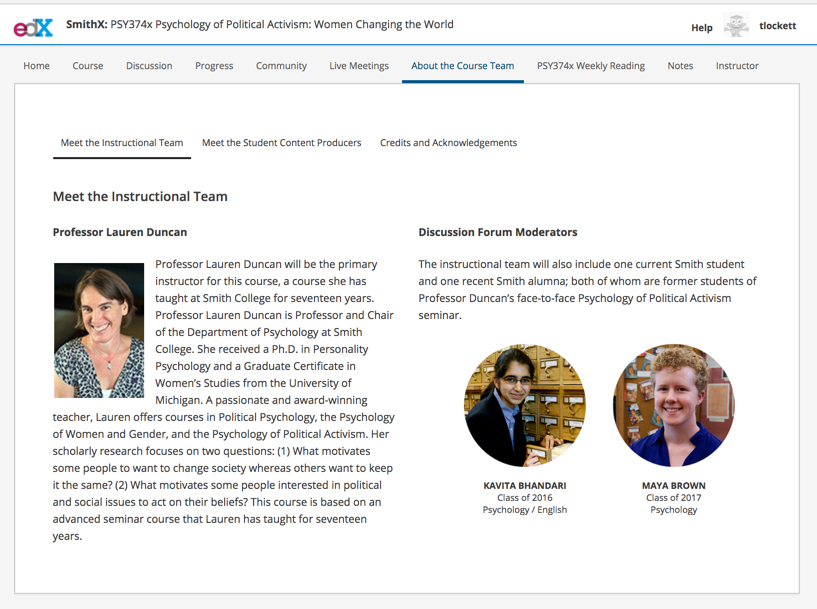
In addition to moderating discussions, we promoted and hosted live Q&A broadcasts of Maya and Kavita with Professor Duncan two to three times throughout each course run. One of these live meetings included Gloria Steinem, our featured activist highlighted throughout the course. Recordings of these can be viewed on our PSY374x YouTube Channel.
Personalizing the Online Learning Experience
The next thing we considered was how to include ways to personalize the learning experience. In the first week’s discussion board, we created an opportunity for students to share their stories around an object that had meaning to them. This correlated with the activists’ video interviews featured in the course talking about an object which they had donated to the Sophia Smith Archives from their history as an activist. In essence, we modeled this activity and then we created an assigned task around it.
We also included an Introduce Yourself ZeeMap to allow students to get a better sense of how many countries were represented in the course and where their peers were located. And, as mentioned above, to address the massive numbers of enrolled students, we invited them to join smaller study groups based on their chosen activist to create more specific and in-depth conversations around a particular theory.
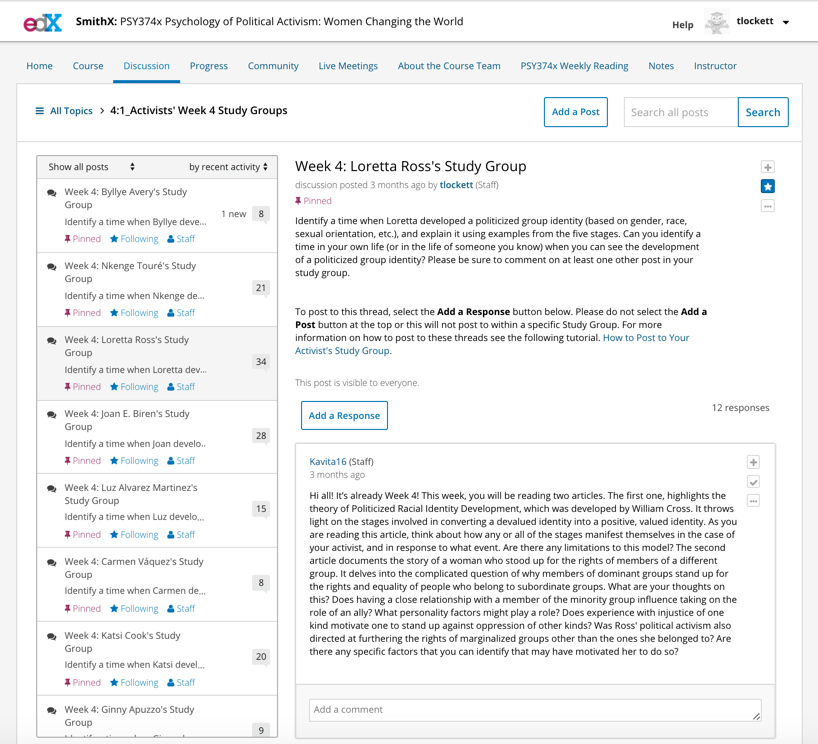
Individualized Learning Paths
We wanted to provide students with choices so they could create an individualized learning path. We categorized content so students could move through each week at their own pace and, to some extent, control their own learning experience. We also allowed students to choose a track, based on the amount of work they wanted to commit to doing. There were two tracks to choose from: a verified track and an audit track.
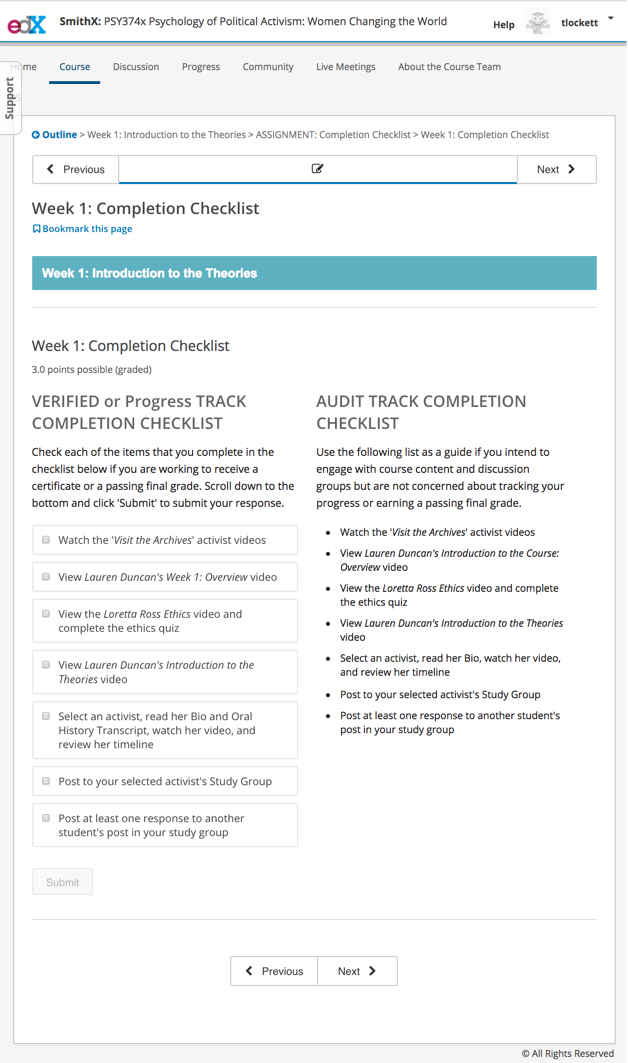
Students interested in getting a certificate needed to complete everything on the weekly completion checklist., Students interested in interacting with the content but who were not concerned with a grade were provided an optional list of activities to complete. This was helpful in addressing the needs of various types of learners.
Course Branding & Social Media

In hindsight perhaps one of the more fortunate things we did early on in course development, in addition to branding SmithX, was to create a brand for the course itself.
While this seemed like an extra step at the start of the project, it proved to be very useful in allowing us to brand a consistent identity for not only the lecture animations and course announcements but all of the communication that happened outside the course such as emails and student support correspondence, as well as our PSY374x Facebook, Twitter and YouTube pages.
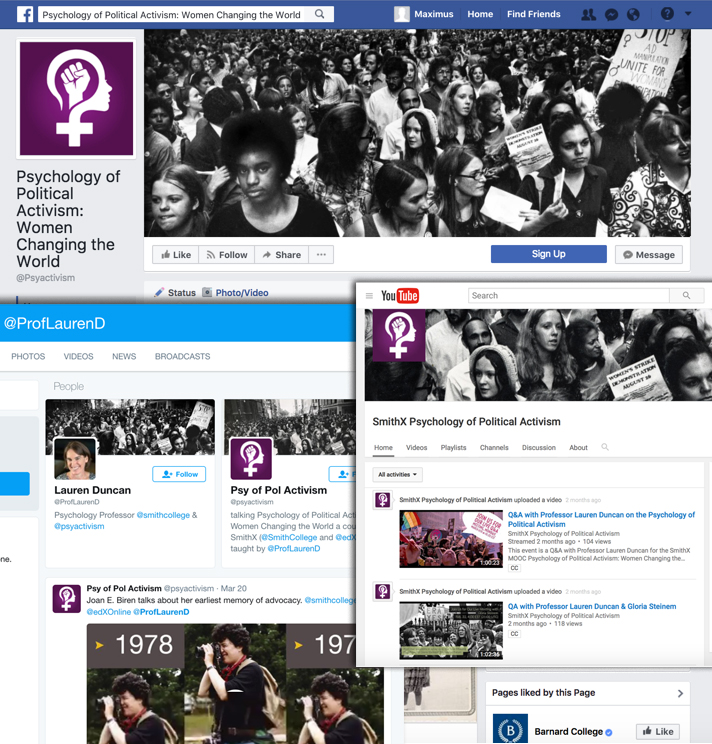
Application for UX Design at Smith
As education continues to evolve, the demand for innovative digital approaches to creating learning opportunities and communicating around curriculum is increasing exponentially. Our initial endeavor into MOOC design was a project that truly emphasized the extent to which effective learning and user experience design are intertwined and how strategic organization of a variety of media can be an asset in creating a cohesive, engaging learning experience. Because this project was on edX, and in essence, siloed from the digital platforms offered at Smith, many of the interactive media tools discussed here are open source and similar pedagogical experiences can be recreated in Moodle or WordPress. Faculty interested in learning more can contact ETS to arrange consultation.